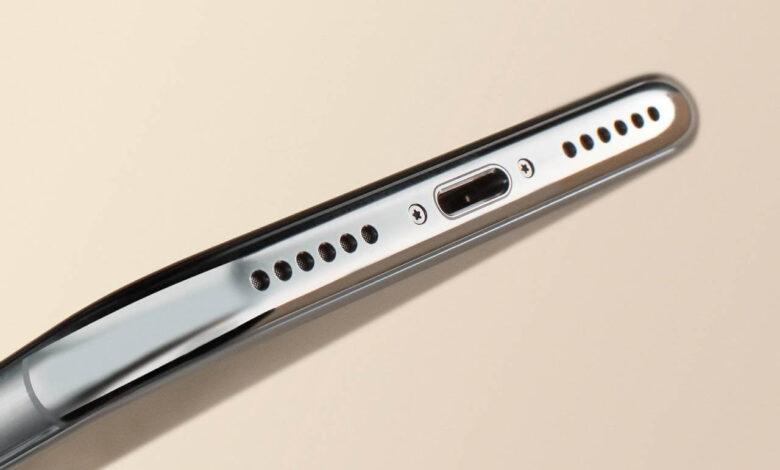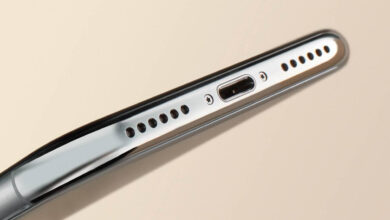How to Tell if Your Phone Speaker is Blown: Quick Diagnosis Tips

Understanding the signs of a blown speaker in your phone can save you from the frustration of poor sound quality during your favorite songs or important calls. Just like any small electronic device, your phone’s speaker is subject to wear and tear, and knowing how to diagnose a problem is the first step to fixing it.
If you’ve noticed a lack of clarity in the audio output, whether it’s music, ringtones, or voices on the other end of a call, it might be time to check your phone’s speaker. Sound issues can range from distortion and crackling to low volume or even complete silence, which could indicate a blown speaker. Before jumping to conclusions, it’s important to consider the symptoms and perform a few simple tests to determine if your phone speaker really is the culprit.
Identifying Blown Speaker Symptoms
When your phone speaker isn’t working as it should, recognising the telltale signs of a blown speaker is essential.
Distortion and Crackling
If you’re hearing distortion or crackling sounds coming from your phone, especially at higher volumes, this is a strong indicator of a damaged speaker. These sounds typically represent interference with the speaker’s ability to move freely or could point to an internal component failure.
- High-pitched whines or static noises may accompany regular audio playback.
- Distortions can sound like bubbling or rasping when playing music or during a call.
Muffled Sounds and Volume Issues
Another key symptom is when the audio from your phone sounds muffled or the volume is noticeably lower than usual. This could imply that the speaker membrane or cone is damaged, hindering sound clarity and projection.
- You might observe that your phone’s audio lacks the usual clarity and sounds dulled or distorted.
- If trying to increase the volume doesn’t lead to a corresponding increase in sound, your speaker might be at fault.
Common Causes of Speaker Damage
Your phone’s speaker can become damaged due to a variety of factors. Recognizing the common causes can help you prevent future damage.
Environmental Factors
Exposure to extreme temperatures, high humidity, or liquids can harm your speaker’s components. It’s important to keep your phone in environments that won’t challenge its design limits.
- Temperatures: Avoid leaving your phone in a hot car or in direct sunlight.
- Moisture: Keep your phone away from water sources; even condensation can be harmful.
Listening Habits
Playing audio at high volumes consistently can strain and eventually damage your speaker.
- High Volume: Frequent use of maximum volume can overdrive the speaker.
- Audio Quality: Poorly encoded files might lead to distortion, which can be harmful over time.
Physical Impacts and Obstructions
Drops, falls, and physical force can cause structural damage. Additionally, debris like dust and lint can clog the speaker mesh, leading to muffled sound.
- Impacts: Use a protective case to reduce the risk of damage from drops.
- Cleanliness: Regularly clean your speaker grille gently with a soft brush.
Testing Speaker Functionality
If your phone’s audio output has become distorted or silent, it’s crucial to test the speaker’s functionality to determine if it’s blown.
Using Built-In Diagnostics
Most modern smartphones include built-in diagnostic tools to help you test your device’s hardware, including the speaker. For iPhone users, this can often be found in the settings under ‘Sounds and vibration’ or ‘Sound’. Android users may find similar options. Navigate to your settings and look for a ‘Speaker test’ to run the diagnostic. If there’s no sound during the test or if the audio is distorted, your speaker may be damaged.
Utilizing Third-Party Apps
In the absence of built-in diagnostics, third-party applications can be useful to test your speaker’s functionality. Apps are available that can help eject water from your phone speakers and perform tests to check for clarity. For example, utilising an app like Fix My Speaker can help ensure your phone’s audio is crisp and clear again.
Hardware Verification
You can perform a simple hardware verification test without any specialized tools. Start by playing an audio file that you know worked well in the past. If you experience a lack of sound or notice audible problems like crackling or popping, these could be signs of a blown speaker. Additionally, make sure the volume is turned up and that your speaker isn’t muted or blocked by debris, as these issues can also affect sound quality. A manual inspection or professional assessment may be necessary if these software methods don’t resolve the sound issues.
DIY Repair Tips
If your phone’s speaker isn’t performing as expected, you might be able to fix it yourself with some simple DIY repair tips. Below, you’ll find ways to tackle cleaning and minor repairs that could restore your speaker’s functionality.
Cleaning and Maintenance
Keeping your phone’s speaker clean can often resolve sound issues without the need for complicated repairs. Start by gently brushing the speaker grill with a soft brush to remove any dust or debris. For more thorough cleaning, lightly dampen a cotton swab with isopropyl alcohol and carefully clean around the speaker area. Remember to avoid getting moisture directly in the speaker as this can cause further damage.
- Soft brush (like a toothbrush) to dust off the speaker grill.
- Isopropyl alcohol and cotton swabs for a deeper clean.
Fixing Minor Speaker Problems
Sometimes, your phone speaker might just need a minor fix to get it back in working order. If your speaker is producing muffled or distorted sound, a simple software reset can sometimes clear up the issue. For hardware-related problems, like a dislodged component, you can try gently pressing around the edge of the speaker to see if it improves the sound. This should be done carefully to avoid causing more damage.
- Perform a software reset by turning your phone off and on again.
- Gently press around the speaker edge—if you feel something snap back into place, this may improve the sound quality.
Remember, if your DIY attempts don’t solve the problem, it’s best to consult a professional to prevent further damage.
When to Seek Professional Help
If your iPhone speaker isn’t working despite your troubleshooting efforts, you might need professional assistance to get to the root of the problem.
Evaluating Repair Vs. Replace
Before heading to a service center, evaluate whether your speaker issue can be repaired or if it’s more cost-effective to replace the device altogether. Consider factors such as:
- Age of your iPhone: If your phone is older, replacement parts may be expensive or difficult to find.
- Extent of damage: Minor issues can often be repaired, while significant damage might warrant an entire replacement.
- Warranty status: If your phone is still under warranty, repairs or a replacement might be covered at little to no cost.
Finding Authorized Service
Ensure that any repairs are performed by an authorized service provider to maintain your iPhone’s integrity and any remaining warranty. Use the following steps to locate a service:
- Visit the official Apple website.
- Navigate to the support section.
- Use the service locator tool by entering your location details to find authorized service centers near you.
- Check for customer reviews of the service centers to ensure quality service.
Managing Repair Costs
To handle the potential costs of repairing a blown speaker, consider these tips:
- Check your warranty: It can significantly reduce repair costs if the damage is covered.
- Get a repair estimate: Always ask for a cost breakdown before agreeing to any services.
- Compare prices: Sometimes, third-party providers can offer repairs at a lower cost, but verify that they use genuine Apple parts to avoid future issues.
Preventing Future Speaker Issues
Taking care of your phone’s speaker can save you from the hassle and expense of repairs or replacement. Here’s how you can prevent speaker issues from cropping up:
Using Protective Accessories
Protective accessories are your first line of defense against external damage.
- Cases and Covers: Invest in a good quality case that can absorb shock and prevent physical damage to your phone, including the speaker.
- Screen Protectors: While primarily for the screen, they often provide additional dust and debris protection, which can clog speakers.
Establishing Safe Volume Levels
To maintain the integrity of your phone’s speaker, be mindful of volume levels.
- Avoid Max Volume: Consistently playing sounds at maximum volume can stress the speaker components over time.
- Use Headphones for Loud Environments: When in noisy surroundings, use headphones instead of increasing the phone’s volume to maximum.
Timely Maintenance and Upkeep
Regular inspection and cleaning can keep your speaker in top shape.
- Routine Cleaning: Use a soft, dry cloth to gently clean the speaker grille.
- Professional Service: If you suspect any issues, have your phone inspected by a professional to avoid further damage.
Frequently Asked Questions
When your smartphone’s sound isn’t right, it’s natural to have questions. Below you’ll find answers to some of the common questions you might have about blown speakers in your smartphone.
What are the symptoms of a blown speaker on a smartphone?
If your smartphone’s speaker is blown, you’ll likely hear audio distortions like crackling sounds, buzzing, or lack of clarity at normal volume levels. Sound may be faint or completely absent.
Can water damage cause smartphone speakers to stop working properly?
Yes, water damage can affect your smartphone speakers. If the device comes into contact with water, it can lead to muffled audio or complete speaker failure.
Why am I experiencing poor sound quality during calls on my phone?
Poor sound quality during calls can be caused by a malfunctioning speaker, but it also might be due to a poor network connection, dirt or debris blocking the speaker grille, or software issues.
What steps can I take to diagnose a crackling sound coming from my phone’s speaker?
To diagnose a crackling sound from your phone’s speaker, start by playing different audio files to see if the issue persists. Clean the speaker grille carefully and check for any software updates that might resolve the problem.
How can I test my smartphone’s speaker to see if it’s functioning correctly?
You can test your smartphone’s speaker by playing various types of audio files. Listen for clear, uninterrupted sound at different volume levels. Alternatively, use diagnostic tests available in some smartphones’ settings.
What are common issues that mimic a blown speaker in mobile phones?
Issues that can mimic a blown speaker include software glitches, equalizer settings problems, or headphones that are not fully unplugged. Sometimes, the problem may be with the audio file itself rather than the speaker.
